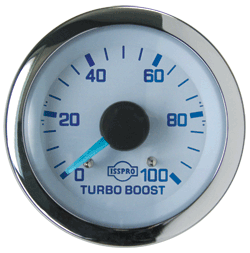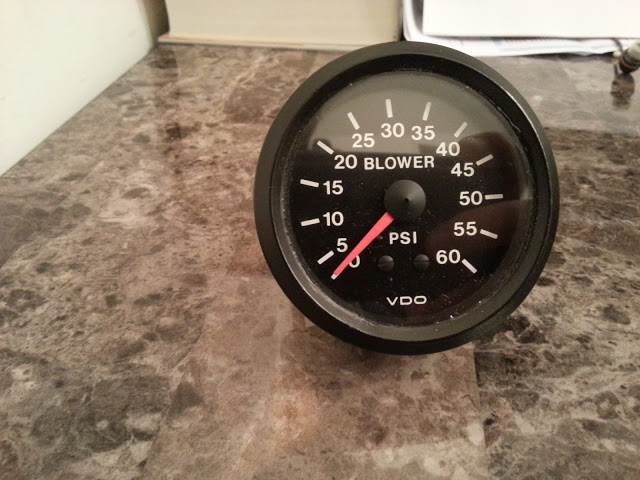Boost pressure vs air flow vs power
#46
Just to clarify... you're saying that it doesn't matter if the turbo is pushing against a brick wall, it's going to take that S366 exactly 117119rpm to make 55psi?
And yes, i know that PSI doesn't matter, i know the bigger picture is RPM. I'm just wondering if there IS an actual pressure limit to turbos. That's all.
#47
Just to clarify... you're saying that it doesn't matter if the turbo is pushing against a brick wall, it's going to take that S366 exactly 117119rpm to make 55psi?
And yes, i know that PSI doesn't matter, i know the bigger picture is RPM. I'm just wondering if there IS an actual pressure limit to turbos. That's all.
And yes, i know that PSI doesn't matter, i know the bigger picture is RPM. I'm just wondering if there IS an actual pressure limit to turbos. That's all.
#49
You're wrong, very very wrong.
Either that or I'm completely misunderstanding you or you're explaining it wrong.
Among other reasons, I'll give you a practical one from my experience: I remove a td04 from a subaru, and bolt in a vf39. Both turbos have the same inlet and outlet size on both compressor and hotside. The 39 just has slightly bigger wheels. I run 10psi on both. Literally all other variables are identical. With the 39 car picks up at least 30-40hp
Please don't go full retard and go down the path of that one moron n00b trying to explain to us that you can't "overfill the cylinders", cause it seriously looks like you're headed that way.
By your logic I can remove a gt2554 from a miata, bolt up a 3076r and as long as I don't exceed 10psi on both, they will both make 180hp.
That's not even close to true
#50
Yes. And going off the top of the map without going off to either side is normally really hard to do, because thermodynamics and time and ****. But way over speeding it by going up and right isnt too hard, but there's no power there and most IWGs wont let you get over there anyways so again, it doesnt happen often. Because once you're over there EMP goes through the mother ******* roof.
#52
Basically the gist is. Smaller turbos spool quicker right? When they spool quicker it causes more heat. If gas is held at a constant pressure then it will expand to fill a larger volume. Since a smaller turbo will spool quicker it will constantly be applying more pressure to the molecules. Larger turbo will have more dense air.
The small turbo in and of itself will not cause more heat because of better spool. In theory, a small turbo could spool very quickly into its highest efficiency island, and therefore produce less heat.
Heat comes from inefficiency in the compressor. If a compressor was 100% efficient, all of the energy would go to the compression of the gas, and no energy would be lost due to heat.
I'm also confused at what you are referring to when you are talking about the smaller turbo constantly applying more force to the molecules. Your mixing and matching terms and principles from fluid dynamics, thermodynamics, and chemistry. Not in a good way, either.
#53
Yes. And going off the top of the map without going off to either side is normally really hard to do, because thermodynamics and time and ****. But way over speeding it by going up and right isnt too hard, but there's no power there and most IWGs wont let you get over there anyways so again, it doesnt happen often. Because once you're over there EMP goes through the mother ******* roof.
#54
I can't really Fathom any motor having a pressure ratio of say 2ish and flowing less than 5 lbs/min... You would have to be a complete retard to pair a turbo that badly. I'm pretty sure like 99% of turbo failure from going outside that range is not from being on the left side.
#55
I can't really Fathom any motor having a pressure ratio of say 2ish and flowing less than 5 lbs/min... You would have to be a complete retard to pair a turbo that badly. I'm pretty sure like 99% of turbo failure from going outside that range is not from being on the left side.
It's rhetorical when we're talking extremes like that. And it would surge first.
#56
In regular turbo set ups the significant flow restriction in the system will be the hotside wheel. The exhaust manifold will be see about the same pressure as the throttle body and the exhaust gases are pumped out of the engine by the crank. If a larger hotside wheel is fitted then it will allow more flow to pass through it for a given boost level.
If you have a huge turbo or a really restrictive intake then boost pressure becomes a function of the engines intake path.
#57
I don't mean to come across as rude, but this is nowhere close to reality.
The small turbo in and of itself will not cause more heat because of better spool. In theory, a small turbo could spool very quickly into its highest efficiency island, and therefore produce less heat.
Heat comes from inefficiency in the compressor. If a compressor was 100% efficient, all of the energy would go to the compression of the gas, and no energy would be lost due to heat.
I'm also confused at what you are referring to when you are talking about the smaller turbo constantly applying more force to the molecules. Your mixing and matching terms and principles from fluid dynamics, thermodynamics, and chemistry. Not in a good way, either.
The small turbo in and of itself will not cause more heat because of better spool. In theory, a small turbo could spool very quickly into its highest efficiency island, and therefore produce less heat.
Heat comes from inefficiency in the compressor. If a compressor was 100% efficient, all of the energy would go to the compression of the gas, and no energy would be lost due to heat.
I'm also confused at what you are referring to when you are talking about the smaller turbo constantly applying more force to the molecules. Your mixing and matching terms and principles from fluid dynamics, thermodynamics, and chemistry. Not in a good way, either.
Really in frustration from me losing my bit i typed about about turbo efficiency and temperature.
If you take your in temp at say 100degree cause you live in southern arizona and apply some vacuum lets say -1 then some discharge pressure at say 15 and your turbo is 75% efficient you will end up with....
~268 degree discharge temp. Lets say your motor is PERFECTLY paired and you have a sweet spot that your turbo is 100% efficient it would be running at ~226 with the same environment. That's a 50degree difference in temp. That's a HUGE difference in air density.
So as you can see the efficiency of the turbo plays a large roll in the intake temps. Now the amount of air the motor can flow also plays a nice roll in here. Based on your restrictions and motor size. The amount of air you can flow is the volumetric efficiency.
Because turbo compressor maps are simply the compressor maps they don't take into account the turbine side. Having the right turbine can change the efficiency of the compressor as well.
Edit: Anyway the idea is it isn't always about psi. Based on many variables you could get more power with a "larger" setup (same psi as "smaller" turbo).
Last edited by krissetsfire; 06-09-2014 at 07:29 PM.
#58
I did a bad job of breaking it down and I jumped all over the place.
Really in frustration from me losing my bit i typed about about turbo efficiency and temperature.
If you take your in temp at say 100degree cause you live in southern arizona and apply some vacuum lets say -1 then some discharge pressure at say 15 and your turbo is 75% efficient you will end up with....
~268 degree discharge temp. Lets say your motor is PERFECTLY paired and you have a sweet spot that your turbo is 100% efficient it would be running at ~226 with the same environment. That's a 50degree difference in temp. That's a HUGE difference in air density.
So as you can see the efficiency of the turbo plays a large roll in the intake temps. Now the amount of air the motor can flow also plays a nice roll in here. Based on your restrictions and motor size. The amount of air you can flow is the volumetric efficiency.
Because turbo compressor maps are simply the compressor maps they don't take into account the turbine side. Having the right turbine can change the efficiency of the compressor as well.
Anyway the idea is it isn't always about psi. Based on many variables you could get more power with a "larger" setup.
Really in frustration from me losing my bit i typed about about turbo efficiency and temperature.
If you take your in temp at say 100degree cause you live in southern arizona and apply some vacuum lets say -1 then some discharge pressure at say 15 and your turbo is 75% efficient you will end up with....
~268 degree discharge temp. Lets say your motor is PERFECTLY paired and you have a sweet spot that your turbo is 100% efficient it would be running at ~226 with the same environment. That's a 50degree difference in temp. That's a HUGE difference in air density.
So as you can see the efficiency of the turbo plays a large roll in the intake temps. Now the amount of air the motor can flow also plays a nice roll in here. Based on your restrictions and motor size. The amount of air you can flow is the volumetric efficiency.
Because turbo compressor maps are simply the compressor maps they don't take into account the turbine side. Having the right turbine can change the efficiency of the compressor as well.
Anyway the idea is it isn't always about psi. Based on many variables you could get more power with a "larger" setup.
Great discussion starter though. Soviet and 18psi you both have valid points, but your just looking at it from different perspectives.














